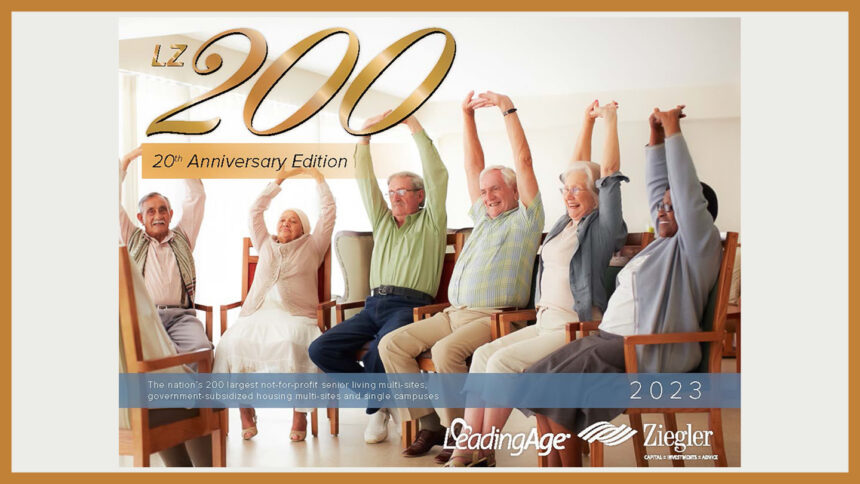
The nation’s largest not-for-profit senior living providers remain largely the same when ranked by the number of skilled nursing beds they provide, even after a year in which many life plan communities started shaving skilled nursing from their portfolios.
The Evangelical Lutheran Good Samaritan Society remains the nation’s largest not-for-profit provider when ranked by nursing beds, of which it has 8,423. The South Dakota-based organization has nearly 16,000 units, including senior living, across 124 locations, according to the latest LZ200 report released Friday.
Each year, the report, which is produced by LeadingAge and investment banking firm Ziegler, lists the largest not-for-profit systems providing site-based aging services in the United States. The 2023 report is based on the number of total owned market-rate units as of Dec. 31, 2022.
The top nine nonprofit providers ranked by nursing home beds remained the same, though Acts Retirement moved ahead of Presbyterian Homes & Services to take the No. 7 spot this year and Cassia of Minnesota moved up from No. 10 to No. 9. Massachusetts-based Covenant Health was the only newcomer to the top 10.
- The Evangelical Lutheran Good Samaritan Society, SD
- Ascension Living, MO
- The Carmelite System, NY
- Benedictine, MN
- Trinity Health Senior Communities, MI
- ArchCare, NY
- Acts Retirement-Life Communities, PA
- Presbyterian Homes & Services, MN
- Cassia, MN
- Covenant Health, MA
Last year’s No. 9, Christian Horizons of Missouri, fell to No. 17.
Good Samaritan, also ranked No. 2 overall when considering beds and units, announced a major restructuring right after the close of the data period for the 2023 LZ200. The organization has begun selling off 35 facilities as part of an effort to concentrate service delivery in seven core states.
Even so, with almost 5,000 beds more than Ascension, CEO Nate Schema has said Good Samaritan expects to remain “one of, if not the largest, not-for-profit providers of long-term care even after the transition.”
When it comes to overall seniors housing and care services, Good Sam and the other providers in the top 10 represent nearly 30% of the total number of units for all systems in LZ 200.
In addition to providing rankings by size, the LZ200 helps to identify trends in senior living and each year looks at a range of additional topics, from technology adoption to growth rates.
“The LeadingAge Ziegler 200 demonstrates the significant role that LeadingAge’s member organizations play in the aging services sector,” Katie Smith Sloan, president and CEO of LeadingAge, said in announcing this year’s report. “They are mission-driven innovators, bringing creativity to complex challenges and living their promise to go above-and-beyond.”
Last year, that meant limited growth and reshuffling of licenses and beds as skilled nursing in particular faced ongoing labor and census issues in the face of record inflation.
“In the last 10 years, the average annual growth rate in total units is 2.2%, with independent living and assisted living growth each year, but decline in the number of nursing care beds,” the LZ200 reported. “Most of the growth in recent years has been from within existing campuses in the form of unit expansions. At the same time, organizations continue to dispose of dated nursing homes or financially stressed communities. Recent years have also seen an uptick in the number of organizations growing through affiliation, acquisition or merger.”
Memory care units, however, have a growing importance, with 69% of the listed providers offering them.
The report also noted considerable growth in home-based services, with 45% of ranked providers now offering some type of home- and community-based services to non-residents. In 2022, the continuing care at home model was offered by more than 10% of the LZ 200, 3% more than a year earlier.




